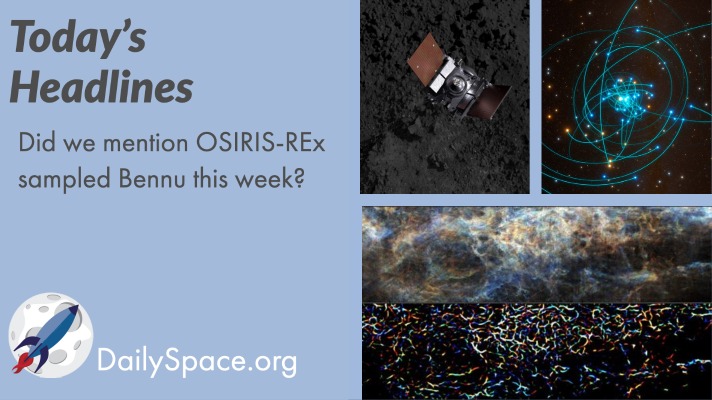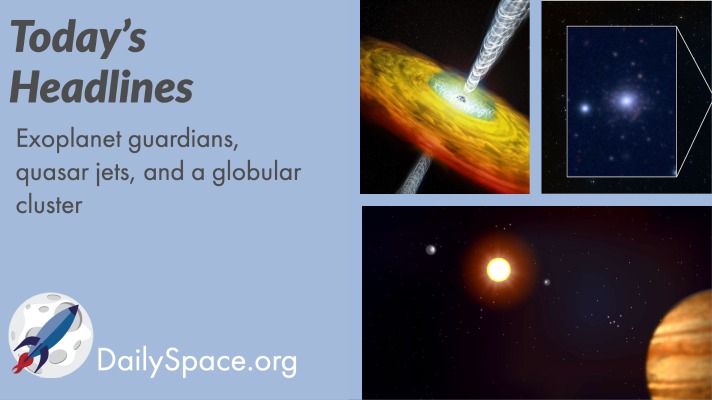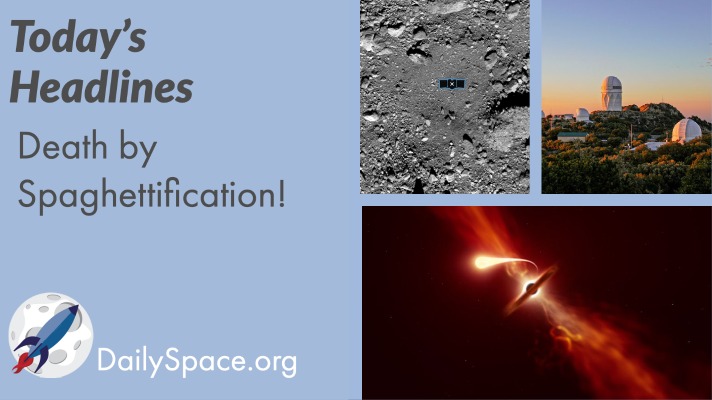
Black Hole’s Dust Ring Casting Shadows
Once again, we find that dust is the culprit, this time causing a black hole to cast shadows out from the heart of its galaxy. Plus, a fossil galaxy in the Milky Way, newborn jets, and more.

Once again, we find that dust is the culprit, this time causing a black hole to cast shadows out from the heart of its galaxy. Plus, a fossil galaxy in the Milky Way, newborn jets, and more.

Today’s top story brings us 39 new gravitational wave detections of black holes and neutron stars, courtesy of the LIGO and VIRGO detectors. Also, it’s Titan’s turn for interesting molecules in the atmosphere, and researchers examined impact craters to see what might lie beneath Titan’s surface. Plus, Hayabusa2’s impact on Ryugu and an updated origin story for Jupiter and Saturn.

Of course, our top story today is the touch-and-go sampling event on our favorite asteroid-to-hate, Bennu. OSIRIS-REx’s TAGSAM worked as expected, and now we’re waiting for the mass measurement of the sample taken. Plus, the Milky Way’s black hole is spinning too slowly to make jets, and the galaxy’s history can be found in atomic hydrogen filaments.

Today we look at three astronomical stories! First, simulations show that rocky Super-Earth sized exoplanets have a Jupiter-sized guardian. Then a study of over 700 quasars shows they form because of… magnetic fields, of course! And finally, spare observation time leads to the discovery of a metal-poor globular cluster near the Andromeda Galaxy.

Join us for a look at today’s top story: ESO telescopes captured the last moments of a star being destroyed by a black hole in a tidal disruption event. Plus scientists are studying Bennu’s surface to get ready for next week’s touch and go sample collection, and NOIRLab begins the process of restarting telescope operations at several observatories around the world.

Research from our home Planetary Science Institute shows that the dune fields on Mars provide solid evidence for lithification and burial. Plus, Carina Nebula has been imaged with adaptive optics and looks amazing! And we take a look at the winners of this year’s Nobel Prize in Physics.